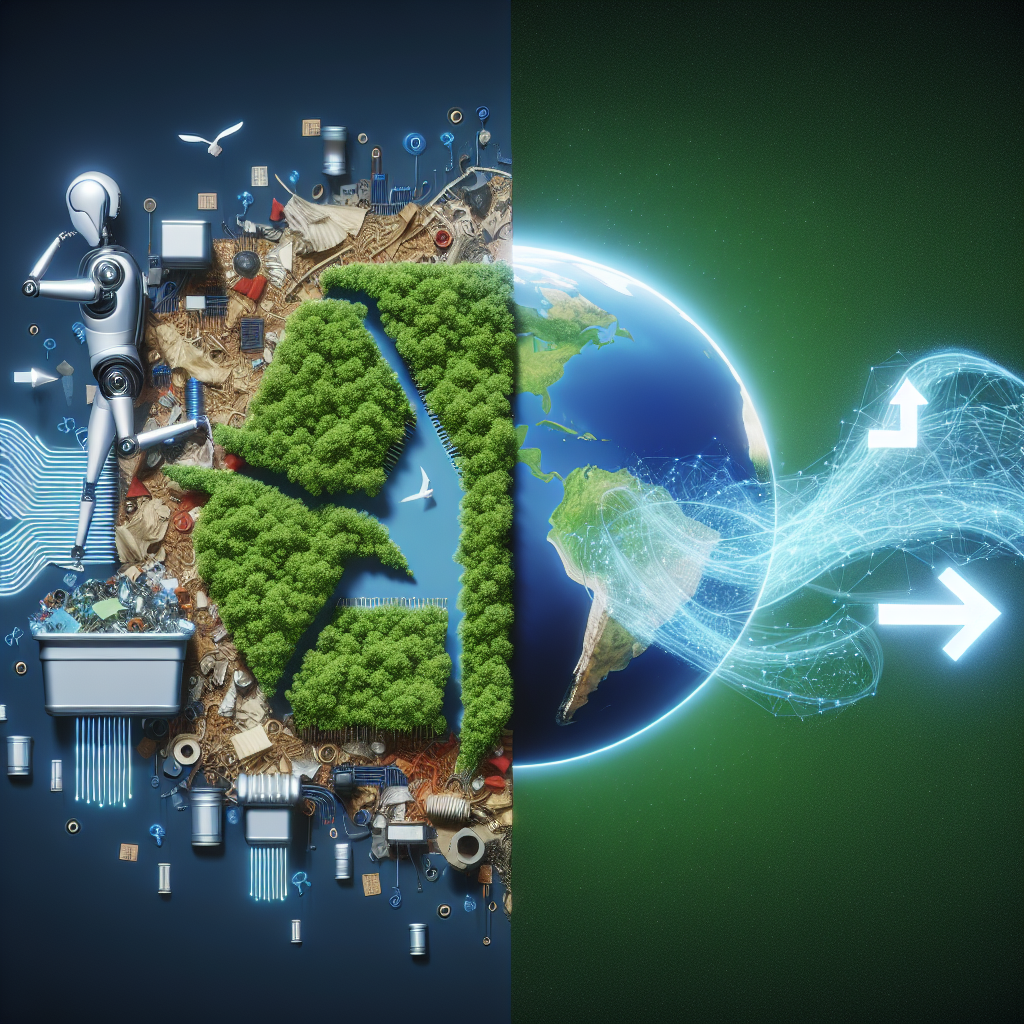The Promise of AI in Achieving Zero Waste Goals
As the world continues to grapple with the environmental challenges of waste management, there is a growing recognition of the need to move towards a zero waste economy. This involves reducing, reusing, and recycling waste to minimize the amount of waste that ends up in landfills or incinerators. Achieving zero waste goals is a complex and multifaceted challenge, but one that can be greatly aided by the use of artificial intelligence (AI) technology.
AI has the potential to revolutionize waste management by providing new insights, optimizing processes, and enabling more efficient resource allocation. By harnessing the power of AI, organizations can better track and analyze waste streams, identify opportunities for waste reduction and recycling, and ultimately work towards a more sustainable and circular economy.
One of the key ways in which AI can help achieve zero waste goals is through improved waste sorting and recycling. Traditional waste sorting processes are often labor-intensive and error-prone, leading to inefficiencies and contamination of recyclable materials. AI-powered sorting systems use advanced sensors and machine learning algorithms to automatically identify and separate different types of waste, making the recycling process faster, more accurate, and more cost-effective.
For example, robotic sorting systems equipped with AI technology can quickly and accurately sort through mixed waste streams, separating recyclable materials such as plastics, metals, and paper from non-recyclable waste. This not only increases the efficiency of recycling facilities but also ensures that valuable resources are not lost to landfill.
AI can also be used to optimize waste collection and transportation routes, reducing fuel consumption and emissions. By analyzing historical data on waste generation patterns, traffic conditions, and other factors, AI algorithms can identify the most efficient routes for waste collection vehicles to minimize travel time and costs. This not only saves money for waste management companies but also reduces their environmental impact by lowering carbon emissions.
Furthermore, AI can help predict and prevent waste generation by analyzing trends and patterns in consumption and production. By tracking and analyzing data on purchasing habits, product lifecycles, and other factors, AI systems can identify opportunities for waste reduction and design more sustainable products and packaging. This proactive approach to waste management can help organizations minimize their environmental footprint and move towards a more circular economy.
In addition to improving waste sorting, recycling, and collection processes, AI can also enhance the overall efficiency and effectiveness of waste management operations. By analyzing large amounts of data in real-time, AI systems can identify areas of inefficiency and suggest ways to optimize resource allocation, reduce costs, and improve overall performance.
For example, AI-powered predictive maintenance systems can monitor the condition of waste management equipment such as trucks, conveyors, and sorting machines, and identify potential issues before they lead to breakdowns or failures. This proactive maintenance approach can help minimize downtime, extend the lifespan of equipment, and reduce maintenance costs, ultimately improving the reliability and efficiency of waste management operations.
Overall, the promise of AI in achieving zero waste goals lies in its ability to provide new insights, optimize processes, and enable more sustainable and efficient waste management practices. By leveraging the power of AI technology, organizations can work towards a more circular economy, reduce their environmental impact, and move closer to a world where waste is minimized and resources are used more efficiently.
FAQs
Q: How can AI help reduce food waste?
A: AI can help reduce food waste by analyzing data on consumption patterns, expiration dates, and other factors to optimize inventory management, minimize overproduction, and identify surplus food that can be donated or repurposed.
Q: What are some examples of AI-powered waste sorting technologies?
A: Examples of AI-powered waste sorting technologies include robotic sorting systems, optical sensors, and machine learning algorithms that can automatically identify and separate different types of waste materials for recycling.
Q: How can AI help improve recycling rates?
A: AI can help improve recycling rates by optimizing waste sorting processes, identifying contamination in recyclable materials, and providing insights on how to increase the efficiency and effectiveness of recycling operations.
Q: Is AI technology expensive to implement in waste management?
A: While the initial investment in AI technology for waste management may be significant, the long-term benefits in terms of cost savings, resource efficiency, and environmental impact make it a worthwhile investment for organizations looking to achieve zero waste goals.

